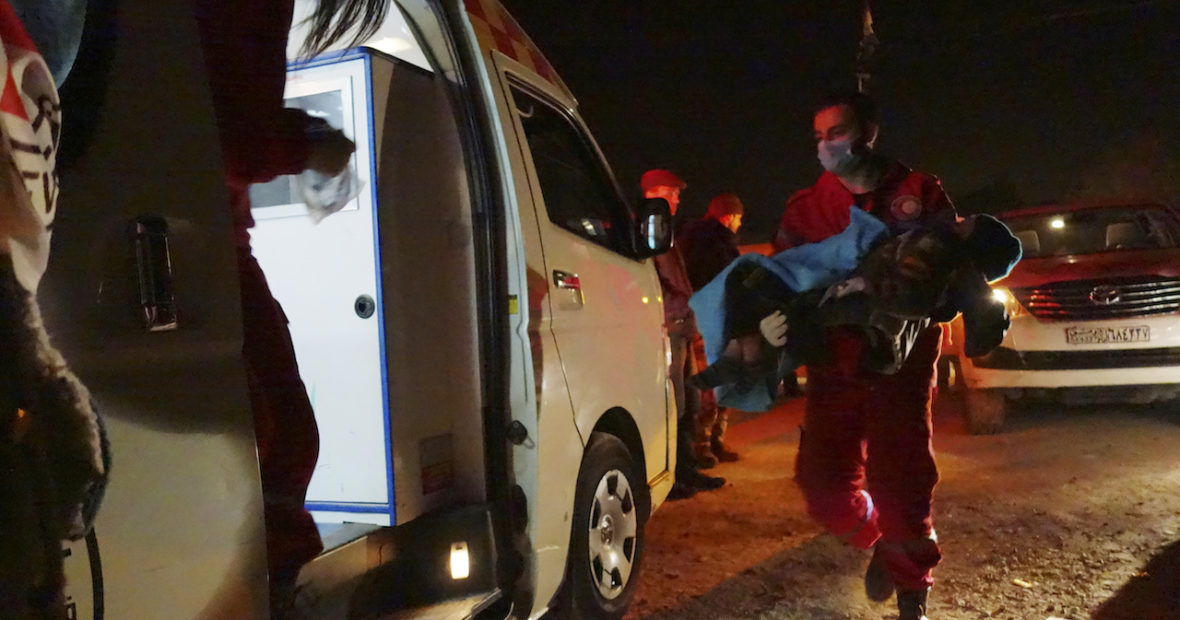Laurie Blank recently wrote some of her thoughts on sieges on EJIL Talk! as part of the Joint Blog Series: Sieges, Evacuations and Urban Warfare: Thoughts from the Transatlantic Workshop on International Law and Armed Conflict
[The Joint Series is hosted by the ICRC Humanitarian Law & Policy Blog, EJIL Talk! and Lawfare. It arose out of the 6th Transatlantic Workshop on International Law and Armed Conflict.]
***
Laurie Blank is a Clinical Professor of Law, Director of the Center for International and Comparative Law and Director of the International Humanitarian Law Clinic at Emory University School of Law.
In this post, she looks at how to balance different legal norms and operational considerations, asking questions such as:
- Is evacuation of civilians an option? In what circumstances?
- How should evacuation be carried out? By whom and to where? And for how long?
- Sieges: If evacuation is not feasible, is isolation permissible if a decision is made not to attack?
Here is an excerpt:
Is evacuation of civilians an option? In what circumstances?
Imagine a military wants to evacuate civilians from an area—either within its own territory or in another State’s territory where the hostilities are expected or ongoing. The motivation is both humanitarian and based on military considerations: removing civilians from the area of hostilities protects them from harm and also frustrates the enemy’s attempts to use them as human shields or otherwise endanger them for tactical or strategic purposes. At the same time, any evacuation raises serious concerns about displacement, the ability of those civilians to received adequate food, shelter, medical care and other necessities, and the legal parameters for any such evacuation.
LOAC does provide space for evacuation of civilians. And, indeed, when utilized to protect civilians from the hazards of military operations, evacuation can help achieve LOAC’s core purpose of minimizing harm to civilians. At the same time, LOAC prohibits forcible displacement or transfer of the civilian population.
For the full blog post, please see Ejil Talk!
Other posts in the series:
- Introducing the Latest Transatlantic Workshop Joint Blog Series, Sasha Radin (Managing Editor, Humanitarian Law & Policy Blog)
- Precautionary Measures in Urban Warfare: A Commander’s Obligation to Obtain Information, Jonathan Horowitz (Senior Legal Officer for the Open Society Justice Initiative) – Humanitarian Law & Policy Blog.
- Sieges, Evacuations and Urban Warfare: Thoughts from the Transatlantic Workshop on International Law and Armed Conflict, Laurie Blank (Clinical Professor of Law, Director of the Center for International and Comparative Law and Director of the International Humanitarian Law Clinic at Emory University School of Law) – EJIL Talk!
- Better Safe than Sorry: Transferring Detainees Safely to Coalition Partners, Tilman Rodenhauser (Legal Advisor, ICRC) – Lawfare
- Medical Care in Armed Conflict PART I & PART II, Marco Sassoli (Director of the Geneva Academy of International Humanitarian Law and Human Rights and Professor of International Law at the Faculty of Law of the University of Geneva) – Humanitarian Law & Policy Blog
- Urban warfare: The obligations of defenders, Aurel Sari (Senior Lecturer in Law at the University of Exeter, Director of the Exeter Centre for International Law, Fellow of Supreme Headquarters Allied Powers Europe and a Fellow of the Allied Rapid Reaction Corps) – Lawfare
- Are sieges prohibited under IHL? Gloria Gaggioli (Swiss National Science Foundation Professor at the University of Geneva Law Faculty & Lecturer at the Geneva Academy of International Humanitarian Law and the University of Neuchatel) – EJIL Talk!
For past Transatlantic Workshop Series
DISCLAIMER: Posts and discussion on the Humanitarian Law & Policy blog may not be interpreted as positioning the ICRC in any way, nor does the blog’s content amount to formal policy or doctrine, unless specifically indicated.






Comments